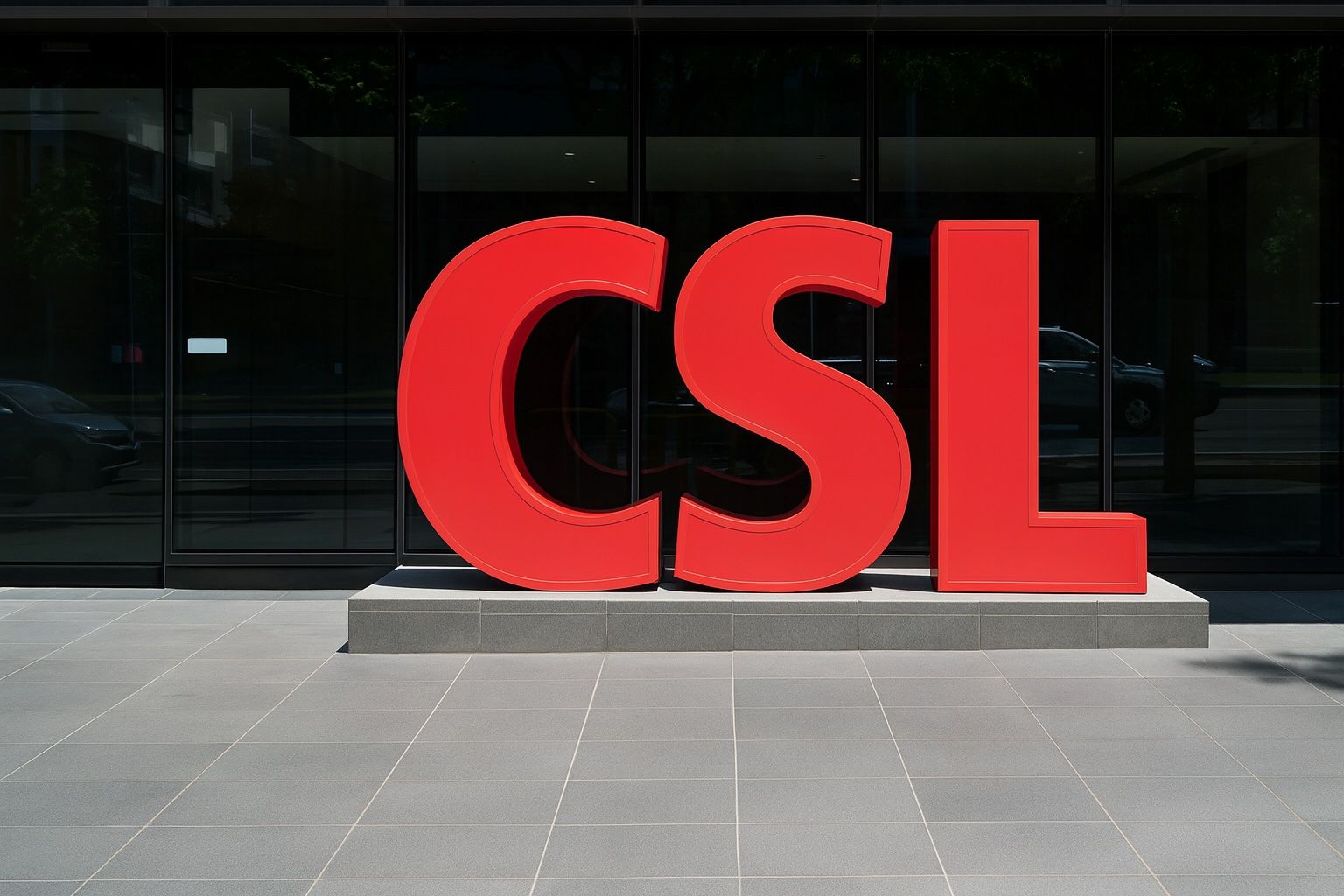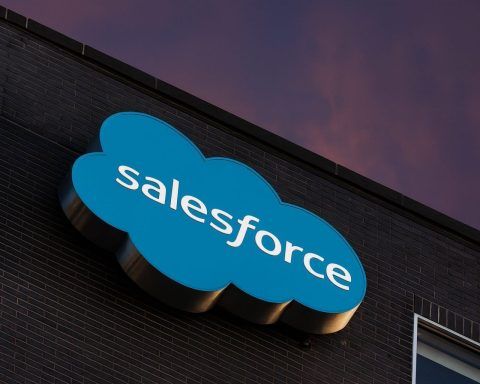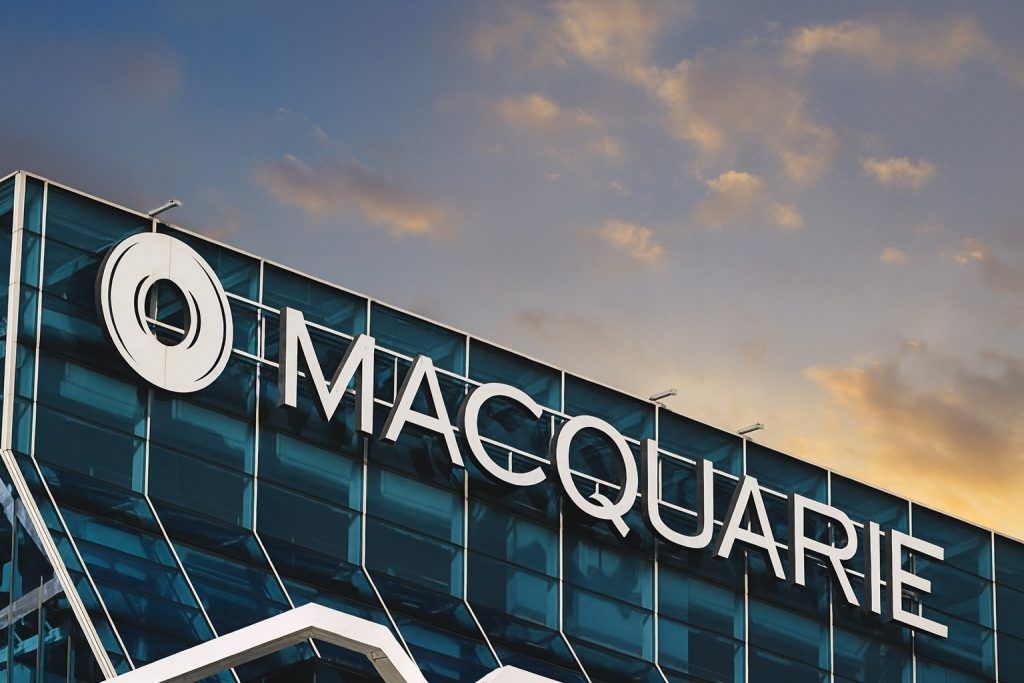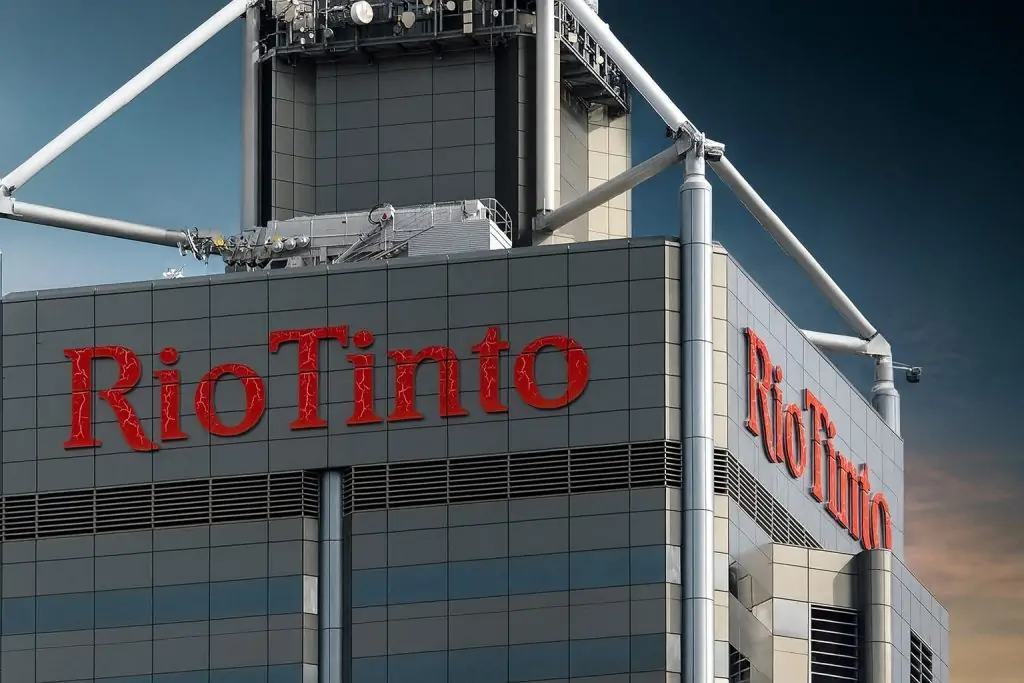MELBOURNE / SYDNEY – 21 November 2025 – CSL Limited (ASX: CSL), the Australian biopharmaceutical giant and long‑time ASX 20 heavyweight, entered Friday’s trade with two dominant storylines: a fresh on‑market share buy‑back update lodged with the ASX this morning, and the market’s ongoing reaction to its recently announced US$1.5 billion investment program in US plasma‑derived therapy manufacturing. [1]
At the same time, the CSL share price remains deep in recovery mode after a brutal year. External research estimates the stock is down roughly 36% year to date, turning what was once a market darling into a chronic underperformer in Australia’s healthcare sector. [2]
Fresh ASX filing: Another daily buy‑back update on 21 November 2025
The newest piece of CSL news dated 21 November 2025 is administrative but important for investors tracking capital management. The ASX “Today’s announcements” page shows an entry titled “Update – Notification of buy-back – CSL” at 8:20am (AEST), spanning six pages. [3]
A linked Appendix 3C – Notification of buy‑back confirms that: [4]
- The filing is a “daily buy‑back notification”.
- It updates a previous buy‑back announcement dated 20 November 2025.
- The initial notification of the buy‑back was lodged on 20 August 2025.
- It covers CSL’s ordinary fully paid shares under its on‑market program.
That August notification coincided with CSL’s major restructuring announcement, when the company said it would reduce its workforce by up to 15%, spin off its Seqirus vaccine unit and resume a share buy‑back of up to A$750 million in FY26. [5]
Since then, CSL has been filing near‑daily updates. An announcements summary from Intelligent Investor and CSL’s investor site shows “Update – Notification of buy‑back – CSL” notices on 11, 12, 13, 14, 17, 18, 19 and 20 November 2025, with closing prices repeatedly clustering around A$176.21. [6]
A separate update syndicated via TipRanks notes that in one recent session CSL bought back 49,785 shares, taking the cumulative tally under the program to approximately 2.19 million shares, as part of a strategy to “optimise its capital structure” and potentially support shareholder value. [7]
In other words, today’s 21 November filing confirms business as usual on the buy‑back front: CSL is still in the market steadily retiring stock under the A$750 million mandate first outlined in August. [8]
What the buy‑back means for CSL shareholders
On the face of it, an A$750 million buy‑back is modest relative to CSL’s scale. Recent third‑party data puts the company’s market capitalisation at around A$100–101 billion, meaning the program equates to roughly 0.7–0.8% of the company’s value. [9]
Still, the daily notifications matter for several reasons:
- Signal of confidence: Management is deploying substantial capital to repurchase shares at a time when the CSL share price has already fallen by more than a third this year. [10]
- Earnings per share support: Over time, fewer shares on issue can help partly offset earnings pressure from weaker guidance and restructuring costs. [11]
- Floor under the share price: Regular on‑market buying can provide incremental demand during periods when broader sentiment remains fragile.
However, the buy‑back is also a reminder that CSL is using capital to defend its valuation in the wake of one of the most aggressive restructurings in its history—rather than purely funding expansion and R&D.
The bigger story: US$1.5 billion plasma‑therapy expansion in the US
Beyond the paperwork, the strategic headline this week remains CSL’s decision to invest around US$1.5 billion in the United States to expand manufacturing of plasma‑derived therapies over the next five years. [12]
According to the company and multiple media reports:
- The money will be deployed across CSL Behring’s US manufacturing footprint, which already includes a major facility in Kankakee, Illinois. [13]
- The plan builds on more than US$3 billion CSL says it has invested in its US operations since 2018, contributing to over 6,500 new jobs and a nearly 19,000‑strong US workforce—about 65% of its global headcount. [14]
- The goal is to boost capacity for immunoglobulin and other plasma‑derived medicines, fortify the US supply chain and meet long‑term demand from patients with rare and serious conditions. [15]
InnovationAus and other outlets have also framed the move as a way for CSL to deepen its ties with the US government, at a time when tariffs on foreign‑manufactured medicines and “buy American” pressures are reshaping global pharma supply chains. [16]
For investors, the message is clear: while the near‑term narrative is dominated by buy‑backs and guidance cuts, CSL is still spending heavily on long‑duration assets that could underpin earnings well into the 2030s.
From market darling to laggard: the CSL share price in 2025
Despite solid full‑year profits, CSL’s share price story this year has been bruising.
On 19 August 2025, CSL released its FY25 results and unveiled a sweeping restructuring plan: [17]
- Up to 3,000 jobs cut (around 15% of its global workforce outside the US plasma unit).
- Closure of 22 underperforming US plasma collection centres.
- A plan to spin off CSL Seqirus, its influenza vaccine business, into a separately listed ASX company by 2026.
- A resumption of the A$750 million share buy‑back.
The market’s reaction was brutal. Australian media and Reuters report that CSL shares plunged around 16–17% in a single session, wiping roughly A$20 billion off its market value—its worst day on record—even though underlying profit rose by about 14% to US$3.3 billion. [18]
Subsequent coverage and investor commentary have highlighted:
- CSL’s transition from growth icon to restructuring story, with execution risk around job cuts and the Seqirus separation. [19]
- Continuing underperformance versus the S&P/ASX 200, with recent market wraps noting that CSL has “lagged the market” even on days when the index posted its best gains in months. [20]
- An estimated 36.3% year‑to‑date decline in the CSL share price as of 20 November 2025, according to Raskmedia. [21]
With the stock now trading in the mid‑A$170s, well below past peaks above A$300, analysts and investors are increasingly debating whether CSL is a value opportunity or a value trap. [22]
Flu vaccine headwinds and Seqirus spin‑off delay
If August was the month of the big restructure, late October delivered another blow.
On 28 October 2025, CSL announced it would delay the planned spin‑off of Seqirus and cut its FY26 guidance, citing an “unprecedented” drop in US influenza vaccination rates. [23]
Key points from that update include:
- Revenue growth guidance for FY26 was cut from 4–5% to 2–3%.
- NPATA growth guidance was lowered from 7–10% to 4–7% (on a constant currency basis).
- US flu vaccination rates are expected to be about 12% lower in the current northern hemisphere season, partly due to policy changes under US Health Secretary Robert F. Kennedy Jr., including reduced vaccine‑research funding and the removal of the CDC chief. [24]
- CSL shares fell as much as 16.6% on the day to around A$176.23, their lowest level since 2018. [25]
Shareholders also delivered a second strike against the company’s remuneration report at the annual general meeting, signalling frustration with the share price collapse, although a subsequent vote to spill the board failed. [26]
Management’s response: “Flu recovery” message
At its Capital Markets Event in Chicago earlier this month, CSL sought to reassure investors that Seqirus’ challenges are cyclical rather than structural. [27]
According to coverage of the event:
- Seqirus has grown its share of the global seasonal and pandemic flu vaccine market from roughly 30% in 2017 to about 42% in 2024, while some competitors have lost ground. [28]
- Management expects a medium‑term recovery in vaccination rates as governments and public‑health advocates push back against vaccine misinformation. [29]
- The business sees additional upside in paediatric flu vaccines and expansion into regions such as the Nordic countries, Japan and South Korea. [30]
Investors, however, appear to be waiting for hard data—not just presentations—before marking the shares back up.
Fundamentals remain solid: FY25 profit growth and core plasma demand
Lost amid the headlines about layoffs and spin‑offs is the fact that CSL’s underlying business remains profitable and growing.
CSL’s FY25 results, released in August, showed: [31]
- Net profit after tax of US$3.3 billion, up about 14% at constant currency versus the previous year.
- Strong performance from CSL Behring, its plasma‑derived therapies division, driven by resilient demand in immunology and rare disease indications.
- Revenue of around US$15.6 billion (ASX materials summarise this figure), underscoring the company’s status as a global plasma powerhouse. [32]
These numbers highlight a tension at the heart of the CSL investment case in late 2025:
Operationally, the franchise is still robust; financially, guidance cuts and political headwinds have shrunk the margin for error that once justified a premium valuation.
How the market is reading CSL on 21 November 2025
As of today’s buy‑back update, external data and broker commentary suggest a split narrative:
- Sentiment is fragile: MarketBeat and other aggregators flag a stream of headlines focused on CSL’s “heavy decline” and ongoing buy‑back notifications, reflecting continued caution among investors. [33]
- Analysts remain broadly constructive: Recent notes compiled by MarketWatch and Webull show firms such as Morgan Stanley and UBS maintaining Buy ratings on CSL’s overseas listing, with at least one target price around A$300, implying sizable upside from current levels. [34]
- Technical picture is weak: Third‑party tools label the stock’s short‑term technical signal as “Sell” after months of underperformance, even as the company continues its buy‑back. [35]
Put simply, fundamental analysts see value in CSL’s global plasma and vaccine platform, while the market tape still reflects deep scepticism about near‑term earnings and policy risk.
Key takeaways for CSL investors on 21 November 2025
With the latest ASX filing and recent news in view, today’s CSL story can be boiled down to a few key points:
- Buy‑back momentum continues
- CSL’s 21 November Appendix 3C confirms that the company is still executing its A$750 million on‑market buy‑back, with regular purchases adding up to more than 2.18 million shares retired so far. [36]
- Strategic capex remains aggressive
- The US$1.5 billion US plasma manufacturing expansion underscores CSL’s confidence in long‑term demand for its plasma‑derived therapies and deepens its already significant US footprint. [37]
- 2025 has been a reset year for expectations
- Massive job cuts, the Seqirus spin‑off plan and its subsequent delay, and FY26 guidance cuts have shattered the stock’s former “can’t‑lose” aura and contributed to a fall of roughly one‑third in the share price year‑to‑date. [38]
- Fundamentals vs politics and sentiment
- CSL is still generating multi‑billion‑dollar annual profits and sees strong structural demand for both plasma therapies and flu vaccines, but now must prove it can navigate an unfriendly policy environment and rebuild trust with shareholders. [39]
For readers following the CSL share price today (21 November 2025), the immediate news flow is dominated by incremental buy‑back updates. The bigger picture, however, is about whether the combination of disciplined capital management, heavy US investment and eventual recovery in vaccination rates can outweigh the restructuring scars that have defined 2025.
As always, this article is general news and commentary only and does not constitute personal financial advice. Investors should consider their own objectives and seek professional advice before making investment decisions.
References
1. www.asx.com.au, 2. www.raskmedia.com.au, 3. www.asx.com.au, 4. company-announcements.afr.com, 5. www.reuters.com, 6. www.intelligentinvestor.com.au, 7. www.tipranks.com, 8. company-announcements.afr.com, 9. www.webull.com, 10. www.raskmedia.com.au, 11. www.reuters.com, 12. www.reuters.com, 13. www.reuters.com, 14. www.australianmanufacturing.com.au, 15. www.reuters.com, 16. www.innovationaus.com, 17. www.reuters.com, 18. www.news.com.au, 19. www.biopharmadive.com, 20. www.forex.com, 21. www.raskmedia.com.au, 22. www.intelligentinvestor.com.au, 23. www.reuters.com, 24. www.reuters.com, 25. www.reuters.com, 26. www.reuters.com, 27. investors.csl.com, 28. stockhead.com.au, 29. stockhead.com.au, 30. stockhead.com.au, 31. www.cslbehring.de, 32. announcements.asx.com.au, 33. www.marketbeat.com, 34. www.marketwatch.com, 35. www.webull.com, 36. company-announcements.afr.com, 37. www.reuters.com, 38. www.reuters.com, 39. www.cslbehring.de







